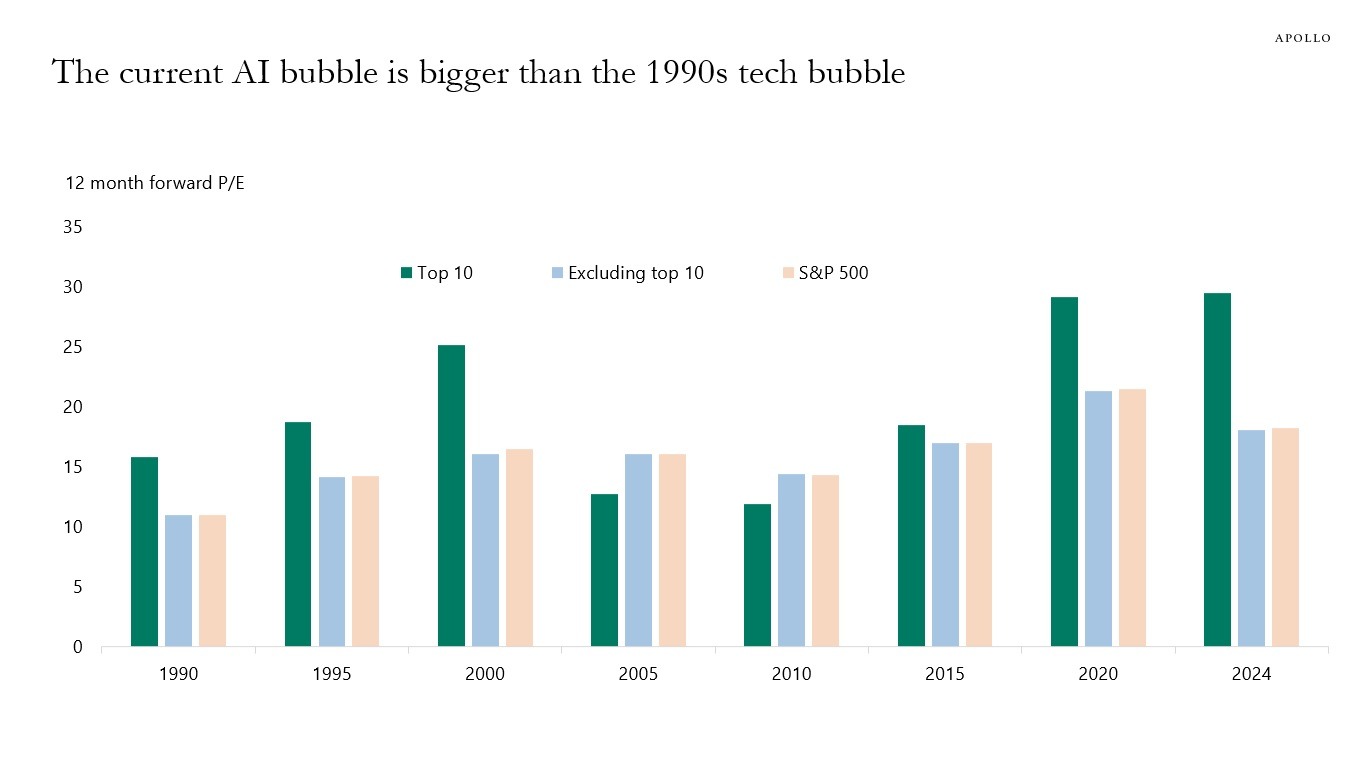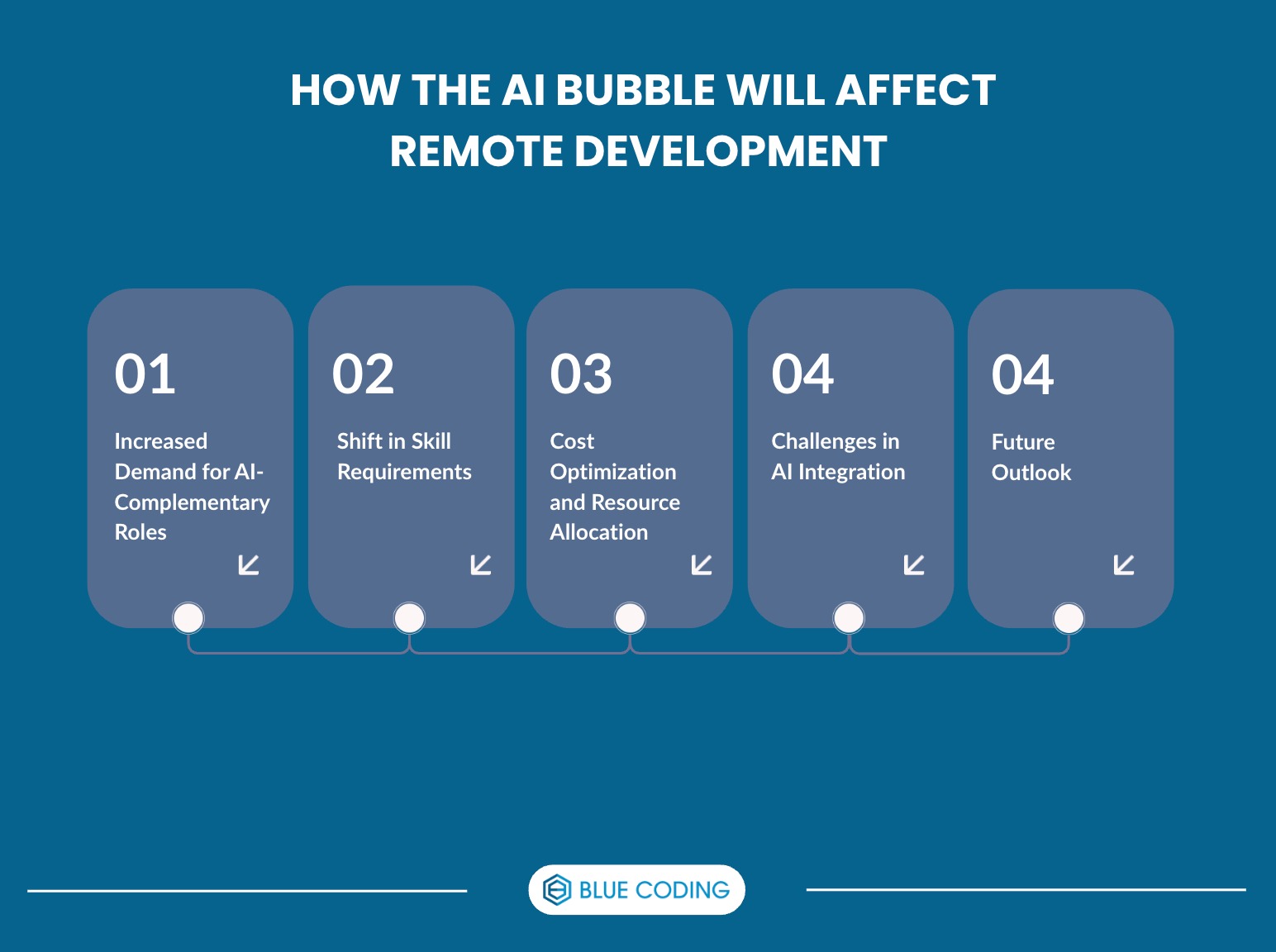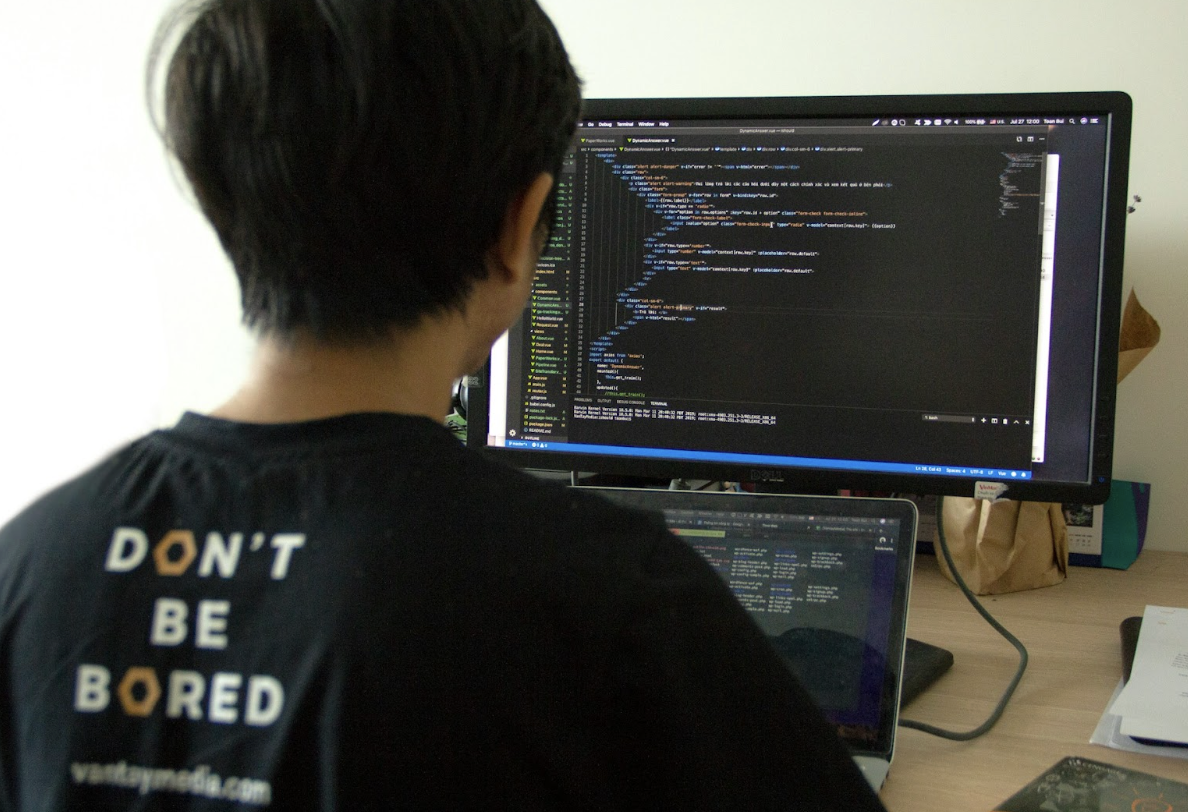 News
News
Artificial Intelligence (AI) has rapidly transitioned from a futuristic concept to a central component of modern business strategies. However, recent developments suggest that the enthusiasm surrounding AI is slowly but surely waning.
This article examines the current state of the AI industry, exploring whether the anticipated "AI bubble" is indeed bursting. We’ll take a look at key indicators, including investment trends, market performance, and the practical applications of AI technologies in the real world. By the end, we hope you'll have a clearer understanding of AI's trajectory and what it means for businesses navigating this brand-new territory.
The Truth about the AI Bubble & its Unicorns
Let’s face it, the term “bubble” is a nicer, slightly more technical way to describe a massive hype for a certain cutting-edge technology. Ever since artificial intelligence first came out, there’s been record-high investments and expectations surrounding the innovation… Along with a whole lot of controversy and questions around its potential impacts, both good and bad. Now, the so-called bubble forms - a risk of bursting - because market valuations and hopes seem to outpace its factual economic impact and profitability. So what does this mean for the AI industry? To put it shortly, it means AI investments need to start yielding their promised dividends, or the market will be in trouble. The spending on AI infrastructure is too sizeable (we’re talking billions!) not to risk a major fallout if these startups can't generate sufficient returns.

The Key Signs the AI Bubble Might Be Bursting
The AI sector, at first considered the guiding light of innovation and investment, is now showing signs of strain as people question its real-life usability, environmental concerns, and true market growth. Recent data and market behaviors suggest that the frantic expansion this all started with may be unsustainable.
1. Investment Slowdown:
Despite a surge in AI investments in 2024, the momentum is waning. Venture capital funding in AI startups dipped to $8.2 billion in Q2 2024, indicating a cooling interest from investors. This decline is part of a broader trend where overall startup funding has been on a downward trajectory for over two years.
2. Stock Market Volatility:
Major AI-related stocks are experiencing significant volatility. Companies like Nvidia and Palantir have seen their stock prices drop by 3.5% and 9.4%, respectively, in recent weeks. This market correction reflects growing skepticism about the long-term profitability of AI investments.
3. Profitability Concerns:
A report from MIT revealed that 95% of organizations investing in generative AI have not observed measurable returns, raising questions about the actual value delivered by AI initiatives. This lack of tangible outcomes is prompting investors to reassess the viability of AI ventures.
4. Layoffs and Restructuring:
Believe it or not, the AI industry is also witnessing layoffs and restructuring efforts. The unicorns that once aggressively expanded are now scaling back operations, signaling a shift from rapid growth to a more cautious consolidation as fears of pulled funding spread across the market. Everyone knew there were challenges in achieving sustainable business models within the AI sector, but now key players are preparing for a new wave of skepticism.
5. Market Correction Indicators:
Analysts are observing signs of a market correction, characterized by declining valuations and reduced investment activity. These indicators suggest that the AI market may be entering a phase of recalibration, moving away from speculative investments towards more grounded and realistic assessments.
Drawing Parallels: AI Hype vs AI Reality
The narrative around artificial intelligence has always oscillated between exaggerated optimism and skepticism - with just a hint of pessimism from certain sectors, if you ask us. While AI holds transformative potential, the gap between its perceived capabilities and actual performance is widening.
Overstated Expectations.
When the hype started brewing back in 2023, tech giants mentioned "AI" 168 times in their Q1 earnings calls, reflecting the sky-high surrounding this technology. However, by late 2024 and to this day, many organizations struggled to translate AI's potential into tangible results. Initiatives were often siloed and disconnected from broader business objectives, leading to disjointed efforts and wasted investments.
The Reality of AI Implementation.
If you’re set on implementing AI into your business, it’s crucial to understand that this is not a one-off project but a continuous journey. Industry leaders emphasize the importance of understanding organizational capabilities and limitations before adopting AI. This approach ensures that any AI initiatives are aligned with long-term goals and set for realistic success.
The Middle Ground.
Let’s face it, AI is neither a magical solution nor a passing trend. Its true value lies in its practical application to enhance human capabilities and improve efficiency. By focusing on clear business alignment, data quality, and cross-functional collaboration, organizations can harness AI's potential without falling prey to unrealistic expectations or using it in irresponsible ways that come at a greater cost than anticipated.
How the AI Bubble Affects Software Development

The intersection of artificial intelligence and software development is undergoing a significant transformation. Some say AI will replace developers, others assure it’ll only make them more productive. This is why we should proceed with extreme care, balancing the cost savings that might come with automation while protecting human capital.
While AI promises efficiency and innovation, its integration into remote development is reshaping the landscape in ways that we can’t 100% anticipate. Let’s take a look at some of the major shifts we’ve been seeing since AI rolled out:
Increased Demand for AI-Complementary Roles:
As AI tools become more prevalent, there's a growing need for professionals who can work alongside these technologies. Roles that require digital literacy, adaptability, and problem-solving skills are in high demand. For instance, positions like AI trainers, data curators, and AI ethics consultants are emerging as essential components of remote development teams. These roles ensure that AI systems are effectively integrated and aligned with business objectives.
Shift in Skill Requirements:
The skill set required for remote developers is evolving. While traditional programming skills remain important, there's an increasing emphasis on understanding AI frameworks, machine learning principles, and data analysis. Developers who can bridge the gap between AI capabilities and practical application are becoming invaluable assets to remote teams.
Cost Optimization and Resource Allocation:
AI's ability to automate routine tasks is leading to cost optimization in remote development projects. By leveraging AI for tasks such as code generation, testing, and debugging, companies can allocate human resources to more complex and strategic aspects of development. This not only enhances productivity but also allows for more efficient use of talent in remote settings.
Challenges in AI Integration:
Despite its advantages, integrating AI into remote development presents challenges. Ensuring data privacy, maintaining code quality, and managing the ethical implications of AI decisions are critical concerns. Remote development teams must establish robust frameworks to address these issues, ensuring that AI integration enhances rather than hinders development processes.
What can we expect now? Well, it’s clear the future of remote development is closely tied to the evolution of AI. As this technology continues to advance, its role in remote development will expand, offering new opportunities and challenges. Businesses that proactively adapt to these changes by upskilling their workforce and including AI into their existing teams - instead of thinking they can replace them - will be better positioned for future growth.
The AI Bubble Beyond 2025
Looking ahead, AI is poised to evolve from its current state into a more integrated and autonomous force within business operations. While the initial excitement has given way to a more measured approach, the trajectory indicates that AI will become increasingly central to strategic decision-making and operational efficiency.
1. Widespread AI Integration:
By 2025, AI is expected to be deeply embedded across various business functions. According to a 2024 BCG survey, two-thirds of companies are exploring the use of AI agents, advanced systems that can act on their own, suggesting that 2025 could mark a turning point for their adoption. These AI agents are anticipated to handle tasks ranging from customer service interactions to complex data analysis, thereby streamlining operations and reducing human workload.
2. Shift Towards Explainable AI:
As AI systems become more complex, the demand for transparency and accountability is increasing. Businesses are likely to prioritize the development and implementation of Explainable AI (XAI) to ensure that AI-driven decisions can be understood and trusted by stakeholders. This shift is crucial for maintaining regulatory compliance and fostering consumer confidence in AI technologies.
3. Focus on AI Ethics and Governance:
With the growing influence of AI, ethical considerations are taking center stage. Companies are expected to establish robust AI governance frameworks to address issues such as data privacy, algorithmic bias, and accountability. Implementing ethical AI practices will not only mitigate risks but also enhance the long-term sustainability of AI initiatives.
4. AI-Driven Innovation:
AI is set to be a catalyst for innovation, enabling businesses to develop new products, services, and business models. By leveraging AI's capabilities in data analysis and pattern recognition, companies can uncover insights that drive innovation and create competitive advantages.
5. Workforce Transformation:
The integration of AI will lead to significant changes in the workforce. While some tasks may be automated, new opportunities will arise in areas such as AI system management, data analysis, and AI ethics. Realistically, developers will continue to do the bulk of the work, remaining the key players towards success. Organizations will need to invest in reskilling and upskilling their teams to adapt to the evolving job landscape, instead of alienating them in hopes of magical automated solutions.
So, Will the AI Bubble Burst? What Does It Mean For You?
The AI landscape is rapidly evolving, with businesses navigating the complexities of integrating AI technologies into their operations. We can’t say for sure if it’ll burst or not, but we can count on the hype to continue to reduce a little. We’ve seen it already, with users complaining of their once-shiny automation tools. Even some leading AI figures, like OpenAI’s CEO Sam Altman, acknowledge that the market is overexcited and risks a burst. Our advice? If you’re going to invest in AI, do it right. Take time to consider the product or service, and don’t rush into thinking you don’t need any more tech-adjacent talent because one unicorn tool claims it can replace them. If you approach the industry with care, there are many ways to leverage this technology.
Need a Technology Partner to Ride the AI Wave?
As this technology continues to reshape industries, having a strategic partner can make a significant difference in leveraging its full potential. At Blue Coding, we stand at the forefront of this transformation, offering tailored nearshore development services that bridge the gap between North American companies and top-tier Latin American talent. With many years of experience, we specialize in connecting businesses with skilled remote developers who understand the intricacies of the technology and its application in real-world scenarios.
We can provide a strategic advantage, combining technical proficiency with a deep understanding of your unique business needs. Our team’s commitment to excellence and client success positions us as a valuable partner in the journey toward nearshore software integration and AI innovation. Ready to better leverage cutting-edge technology? Contact us to schedule a FREE consultation!



